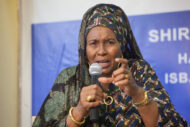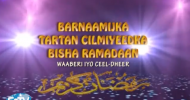How far can the language be metaphoric? After 9/11 it has become familiar in some Western media to say: “Not all Muslims are terrorists, but nearly all terrorists are Muslims.” The sentence does not criminalize all Muslims, instead it gives terrorism a brand name: “Muslim.” Thus, when two tourists talk about tourism in India, for example, both quickly recall Taj Mahal, but if they mention terrorism, they start counting the number of Muslims there.
The paradox is that while India, a secular country with Hindu majority, summarizes a good part of its heritage in Islamic architecture with romantic connotations as preferred destination for honeymooners around the world, it is difficult to understand the passion for seeing Taj Mahal and the fear of approaching Muslims in Agra, where the one of the seven wonders is located!
Taj Mahal, pride of Indians, is described as “one of the universally admired masterpieces of the world’s heritage.” This edifice reveals the Muslims’ imprint in a country of more than 1.2 billion people, and more than seven religions. It is not only considered the symbol of India, but also an icon of love and sincerity since the Muslim emperor Shah Jahan decided to immortalize his wife’s memory.
On the other side of the world, Alhambra Palace, in Granada, Spain’s Andalusia region, was erected during an era of inter-communal harmony among the adherents to the Abrahamic faiths: Islam, Judaism and Christianity. Despite the wars in the region, Muslim Andalusia was an ideal place of the three communities to coexist in peace and harmony, according to several Western historians.
Taj Mahal and Alhambra Palace are living examples of the Islamic contribution to human civilization in non-Muslim countries. While the full picture of Islam can’t be minimized to historic monuments, it is even more detailed and complicated than being summed up in one word “Jihad.”
While this Arabic word has become synonymous in the West with terrorism, the ambiguity surrounding the meaning of this term opens the door for the media, and subsequently the non-Arabic speaking people in Europe and the United States to formulate their distorted definitions about Islam.
For more than a decade, the world has looked at Islam through the eyes of various Western media that has been influenced by the so-called “Islamophobia” following a series of terrorist attacks. Consequently, a superficial campaign, deliberately deformed Islamic symbols and provoked Muslims in the name of freedom of expression concentrating on repeated rebuke and stereotypes.
This organized and endless campaign urged Ekmeleddin Ihsanoglu, the secretary-general of the Organization of Islamic Cooperation (OIC), to call for a positive role of an open, constructive and respectful debate of ideas. This call was included in his eight points to bridge the cultural gap between East and West. Ihsanoglu’s ideas became the basic text of UN 16/18 Resolution on “combating intolerance, negative stereotyping and stigmatization of, and discrimination, incitement to violence, and violence against persons based on religion and belief.”
Despite a counter campaign facing Resolution 16/18 which raises concerns over perceived expected consequences on freedom of expression, OIC’s initiative is necessary in order to evaluate priorities and needs associated with the freedom of expression. In other words, the sacred right of the concept of the freedom of expression which emerged after the Age of Enlightenment in Europe required, and still requires, a boundless space of thinking and expressing.
But we know how the moral responsibility of using the absolute power of thinking urged Alfred Nobel, the inventor of dynamite, to be apprehensive about how he would be remembered. This inspired him to specify that his fortune be used to create a series of prizes for those who confer the “greatest benefit on mankind.”
Therefore, we can imagine how much an irresponsible misuse of the advantage of freedom of expression can jeopardize the relations through ethnically mixed communities. This, in fact, becomes worse when the freedom of speech converts into hate speech.
Most important, human values should serve our noble goals and participate in building prosperity and harmony of human beings. However, if the irresponsible “freedom of expression” incites violence, there should be a pressing need to rethink what we say and what we promote.
The Danish cartoons, the film “Innocence of Muslims” and other similar works leave a lasting negative impression about Muslims. Such acts benefit from the immunity provided by the freedom of expression so as to project Islam through a superficial perspective that combines Islam’s meaning and teachings in one word: Jihad, one single word that exacerbates the antipathies.
Further, the intentionally misused term of Jihad rallies the extremists on both sides, thus enhancing the environment of hatred and intolerance. The deliberate twisting of this term has eradicated the high values of Taj Mahal and converted the historical building into a mere photograph on post cards.
December 23, 2012 | Posted by admin
COMMENTS

 All Posts
All Posts









